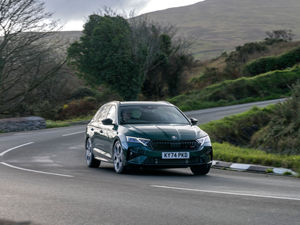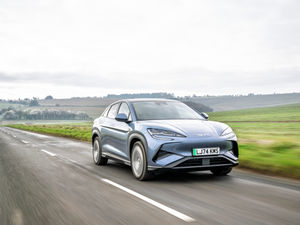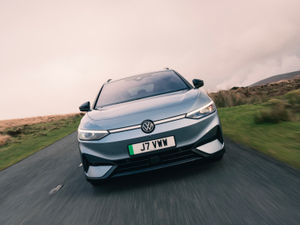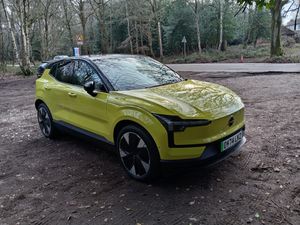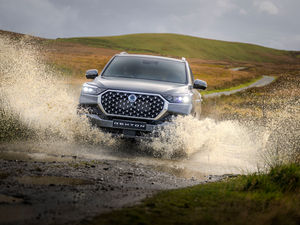First drive: Is the Jaguar F-Pace most appealing with plug-in hybrid power?
Jaguar has given its updated F-Pace a new plug-in hybrid powertrain. With low emissions and running costs, could it be the pick of the range?
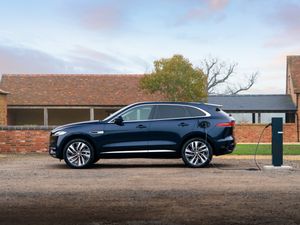
What is it?

Gone are the days of old where a mid-life facelift would see a car arrive with a whole new look, but Jaguar has shaken that up with its recent F-Pace update. While it doesn’t look drastically different from the outside, the interior has been overhauled, and importantly for this review, a new plug-in hybrid (PHEV) model has been introduced.
Jaguar already sells the I-Pace EV, so the F-Pace PHEV bridges the gap between traditionally fuelled cars and their zero-emission alternatives. And with a decent electric-only range, this new F-Pace seems like a great option for those not quite ready to dive headlong into EV ownership.
What’s new?

This feels like a pretty comprehensive update and as such, there are plenty of changes to speak of. The exterior styling has been given a little nip and tuck, the interior has been given a new look with updated technology, and there’s a range of new electrified engines.
We’ve already driven a mild hybrid petrol and high-performance V8 SVR and been hugely impressed with how the updates have been implemented, so the signs are promising for this PHEV. With low emissions making it appealing to company car buyers, this could be a real winner for Jaguar.
What’s under the bonnet?

Almost all but the SVR F-Pace get mild hybrid engines, but today we’re testing the full plug-in hybrid model. It uses a 2.0-litre four-cylinder petrol engine combined with an electric motor, making a combined 398bhp and 640Nm of torque, while CO2 emissions are just 49g/km and it registers 130mpg on the combined cycle.
The battery powering the electric motor is impressively sized, so Jaguar reckons the F-Pace can travel about 33 miles on electricity alone. For those who have short commutes and have access to home/destination charging, many trips could be taken without needing to bother the engine at all.
What’s it like to drive?

Electric power suits the premium driving experience so it’s no surprise when the F-Pace immediately feels relaxed and refined in urban driving. Keep the engine out of the equation and the comfort levels are high, yet even when it kicks in it’s fairly subtle.
Although this is the most powerful non-SVR F-Pace – it can cover the 0-60mph sprint in five seconds flat – this is not a car for hustling down your favourite B-road. This is for those who want to take it easy, so whether you need something to de-stress on the school run or make long-distance motorway commutes breeze by, the F-Pace makes an excellent companion.
How does it look?

This has long been one of the best-looking SUVs on the market, and that hasn’t changed with this facelift. If anything, the subtle updates have only served to improve things, with a cleaner and sleeker – yet somehow more aggressive – appearance.
Look closely and you’ll spot a new bonnet design, slim LED headlights with a distinctive double-L light signature, a new grille and new rear lights. Although the details are sleek, there’s no denying the F-Pace struggles to hide its heft somewhat, but this gives it a lot of presence on the road.
What’s it like inside?

There have been fairly comprehensive updates in the cabin – owners of even the outgoing F-Pace will be hugely impressed by the leap in quality, while buyers tempted across from the likes of BMW and Mercedes-Benz might find there are fewer differences to be found than before.
The F-Pace immediately feels a level of premium higher than before, with expensive materials all around. Meanwhile, the new tablet-like infotainment system has Jaguar Land Rover’s slick Pivi Pro software, which is a massive improvement on what came before.
What’s the spec like?

As always with Jaguar, you start by choosing between a regular F-Pace or an R-Dynamic model, which adds some sporty-looking bumpers and different 19-inch alloy wheels. There are then three specification packs to choose from, starting with S, which includes LED headlights, vast swathes of leather inside, the new Pivi Pro infotainment system and cruise control.
Step up to SE and you get alloy wheels, auto high-beam, upgraded seats, wood veneer and more driver assistance technology. Finally HSE models get 21-inch wheels, a Meridian sound system and even more assistance systems including adaptive cruise control.
Prices for the regular F-Pace start at £56,060 for the S, £58,975 for SE and £62,175 for HSE. Meanwhile, each specification pack starts at £57,155, £60,070 and £64,490 respectively in R-Dynamic trim.
Verdict

The updated Jaguar F-Pace is fantastic and we’ve previously noted how it’s now up there with the best in class. Fitting the plug-in hybrid powertrain with its excellent electric-only range only enhances the premium appeal.
Sure, with prices starting at £56k it looks costly, but it’s almost identically priced with the highest-performance mild hybrid petrol, yet should have considerably lower running costs. When you look at it this way, that higher cost of entry feels pretty well justified.

